We all know that American blue cheese, cheddar and burrata are entirely different cheeses, yet we don’t lump them together and say, “Oh, I had a wonderful dish made with American cow’s milk cheese.” Yet many of us might say, “Oh, I had a wonderful dish made with goat cheese!”
It’s really kind of silly because goat cheeses can be as varied as, well, cheddar and blue. The photo above shows six French goat cheeses recently sent to me as part of an outreach by an organization called Goat Cheeses of France to educate the US cheese consumer. And so, for the sake of you, Dear Reader, and in the name of science and education, I nibbled and scribbled my way through those cheeses, tasting and making notes in order to make this country of ours more goat cheese-aware. You’re welcome.
When many of us think of “goat cheese”, it is the image of a pure white log of cheese with no rind that comes to mind. That is actually fresh goat cheese, which is mild-tasting, soft and spreadable and can be easily crumbled into a salad, or paired with slices of juicy peach and drizzled with just a touch of honey. But I digress. I really want to tell you about the ripened cheeses pictured above.
Boucheron (aka Bûcheron and Bucheron)
Nearly as familiar to many cheese lovers as the ubiquitous* fresh log, Boucheron (pronounced as boo-sher-on) has a soft, ribbed rind and sometimes seems as though you’re getting two cheeses in one. The outer ivory-colored layer can be creamy, rich and soft– like warm butter, (especially when allowed to sit out a bit)– and the brighter white interior is chalky, with a lemon-y tang– like a more intense version of fresh goat cheese. Boucheron served with slices of ripe fig restores balance and peace to the universe.
Crottin
Like so many of us, Crottin (crow-tan) is light and charming when young, and grand and beguiling when aged. This soft ripened cheese from the Loire valley starts out with a soft white rind, which *sigh* ripples and darkens as it ages. The cheese does dry a bit (as much as it pains me to admit it) but also develops more complex, interesting flavor that is both herbaceous and nutty. Crottin can be consumed in various stages of the ripening process, including at the point where it has aged enough to develop a black exterior. Crottin is made in these small disks (as pictured) and as it ages, they become more dense and lighter. (If only!) One town away from where the famous Crottin de Chavignol has been made since the 16th century, you will find it’s perfect drinking companion: Sancerre.
Florette
Florette (flow-ret) is the brie of the goat cheese world. It even looks it, doesn’t it? Actually, while brie is normally a big round disk, Florette is a hexagon. It has a far creamier, mild flavor than we usually associate with goat cheese, although it does have a hint of the distinctive goat cheese aroma. The Rhone cheese is made with pasteurized goat’s milk, which helps soften the classic goat cheese presence. If you happen to come upon a Florette, don’t hesitate to substitute it for brie in this recipe we created for PotsandPans.com for Baked Brie Stuffed with Fennel, Dried Cranberries and Port.
Valençay
This blue-grey ash covered pyramid is certified AOC (Appellation d’origine contrôlée), which only 14 French goat cheeses have been awarded– but only only when it is made with raw milk. Alas, to import it to the US, the milk must be pasteurized, so it tastes somewhat different from the version you will have in the Centre region. But do not cry: even the pasteurized version has that lovely woodsy, mineral flavor and bright tang, along with the requisite dense, smooth texture.
And here’s a fun little factoid about this distinctive tasting– and looking– cheese. See how it looks like a pyramid with it’s top cut off? Legend has it Napoleon was in a dither when he stopped in at the Château de Valançay on his way back from a war with Egypt (and Syria) that hadn’t gone well. After an elaborate dinner, the local cheese, which was then shaped like a full pointy-topped pyramid, was served, reminding Napoleon of his loss in Egypt. Enraged, he jumped to his feet, drew his sword, and lopped off the top of the cheese. Seems like Little Bonaparte could use some anger management therapy. Or more wine with his cheese, maybe.
Tomme de Bethmale
This washed-rind cheese from the Pyrenees looks very different from all others because it is aged and pressed until it is firm. It has an orange-brown rind and mild, mushroom-like savory flavor with a mild sweet finish, and a little of that “stinky cheese” aroma. I would love to pile thin slices on pumpernickel bread with thick, juicy slices of tomato, slather the bread with butter and turn it into a luscious grilled cheese sandwich.
Chabichou du Poitou
Say this: sha-be-shoe de pwa-two. Say it, and never forget it. This is another AOC cheese, but I can’t focus to think that deeply about it.
I am going to try to be polite while describing this cheese, but it will be very difficult. Because– well, look at it! Can you believe the brazen sultriness?! That wrinkled rind you see is, of course, edible, and provides a much needed contrast from the lusty, oozing, buttery goo that slithers down the firm, creamy interior. It smells musky and goat-y, but tastes sweet and faintly tangy. Good manners prevent me from offering serving suggestions.
# # #
Alright, people, My work here is finished. Go discover the world of French goat cheeses, knowing it extends far beyond that lovely little bright white log in the supermarket.
* Don’t hold the fact that fresh goat cheese is readily available against it. Butter and bacon are also readily available, and no less desirable as a result.
Follow my blog with Bloglovin
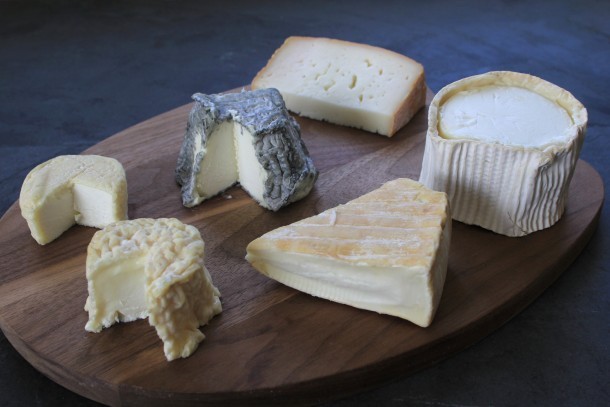
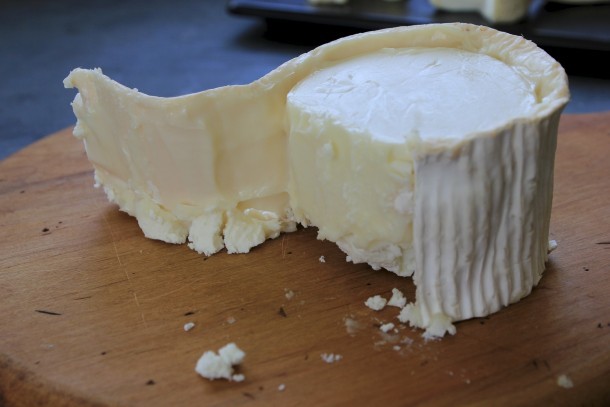
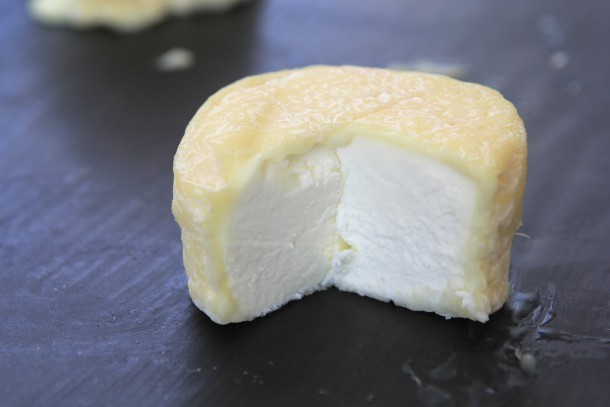
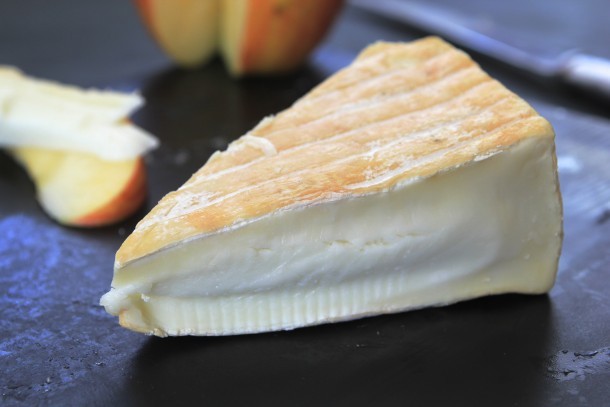
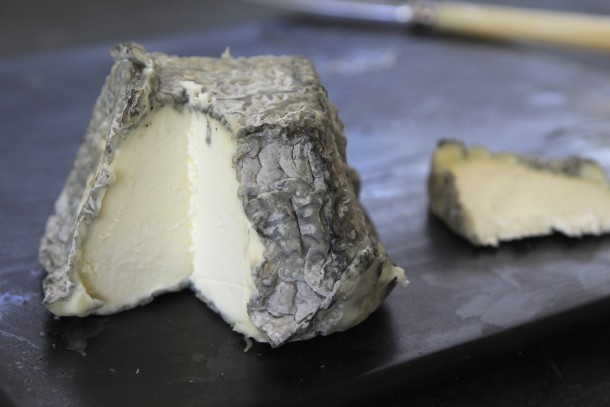
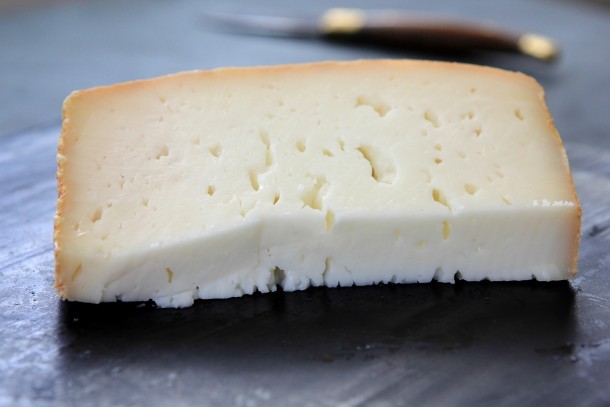
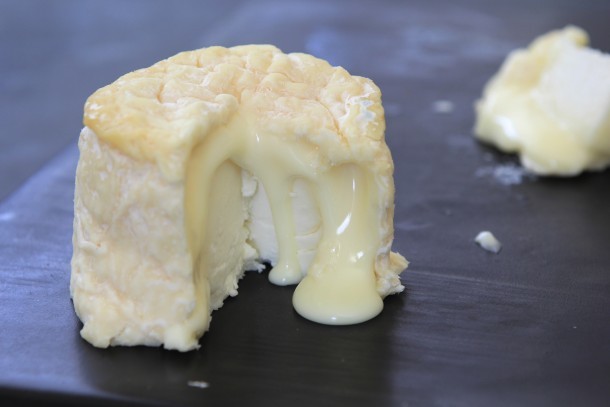
Never will I settle for “goat cheese ” again
this was an extremely helpful and useful piece … thank you!!
So I have dairy goats and want to get into cheesemaking. I’m confused about what French Chevre really is. I have a neighbor who makes chevre. She says sometimes she used rennet and sometimes she uses lemon juice instead. Some recipes use lemon juice/vinegar with or without rennet.
What is the true authentic way to make French Chevre?
What is the true definition of French Chevre? Is it any cheese made with goat milk and encompassing various types or cheese, or is it a specific type of cheese with only specific ingredients???
I want to learn to make it right
Hi Peggy,
I am afraid this is outside of my area of expertise, but I suggest you contact the Cheese Society, who may be able to point you in the right direction. They have educators listed on their site as well as other resources. You can find them here: http://www.cheesesociety.org/events-education/list-of-educators/
Also, you may be able to find local classes on cheesemaking.
Best of luck!
Marge
Dear Marge, I found this article helpful from a reverse perspective! I’m a Brit, living in the French speaking part of Switzerland. The goat’s cheese here is mostly the aged varieties you describe above – crottin and ash covered pyramids and logs. Totally irresistible! But when searching recipes online, I frequently find ones from US writers that say to use chevre, and this has baffled me. Which chevre do they mean, I’ve been asking myself. Some of the recipes seem to use the chevre to melt into a sauce, and I’ve not understood how that works with a rind. Doesn’t it get a bit lumpy?!
Thanks to your article I get it! Chevre in the US generally means a fresh, spreadable goat’s cheese. Brilliant, so many recipes make sense now.
Everything you say above is spot on, although I have a different perspective on your comment that a crottin can be a bit dry. That’s a good thing in my book! I love a really dry crumbly crottin. When you go to a farmer’s market in France, the cheese sellers often have rows and rows of crottin which all started out as identical cheeses but are at different stages of maturity. You can choose whether you want the fresher, bigger ones or a shrunken little black one. Sometimes they are too aged even for me but I love seeing the locals precisely pointing out the exact one they want.
Thanks for a great article!
Jude